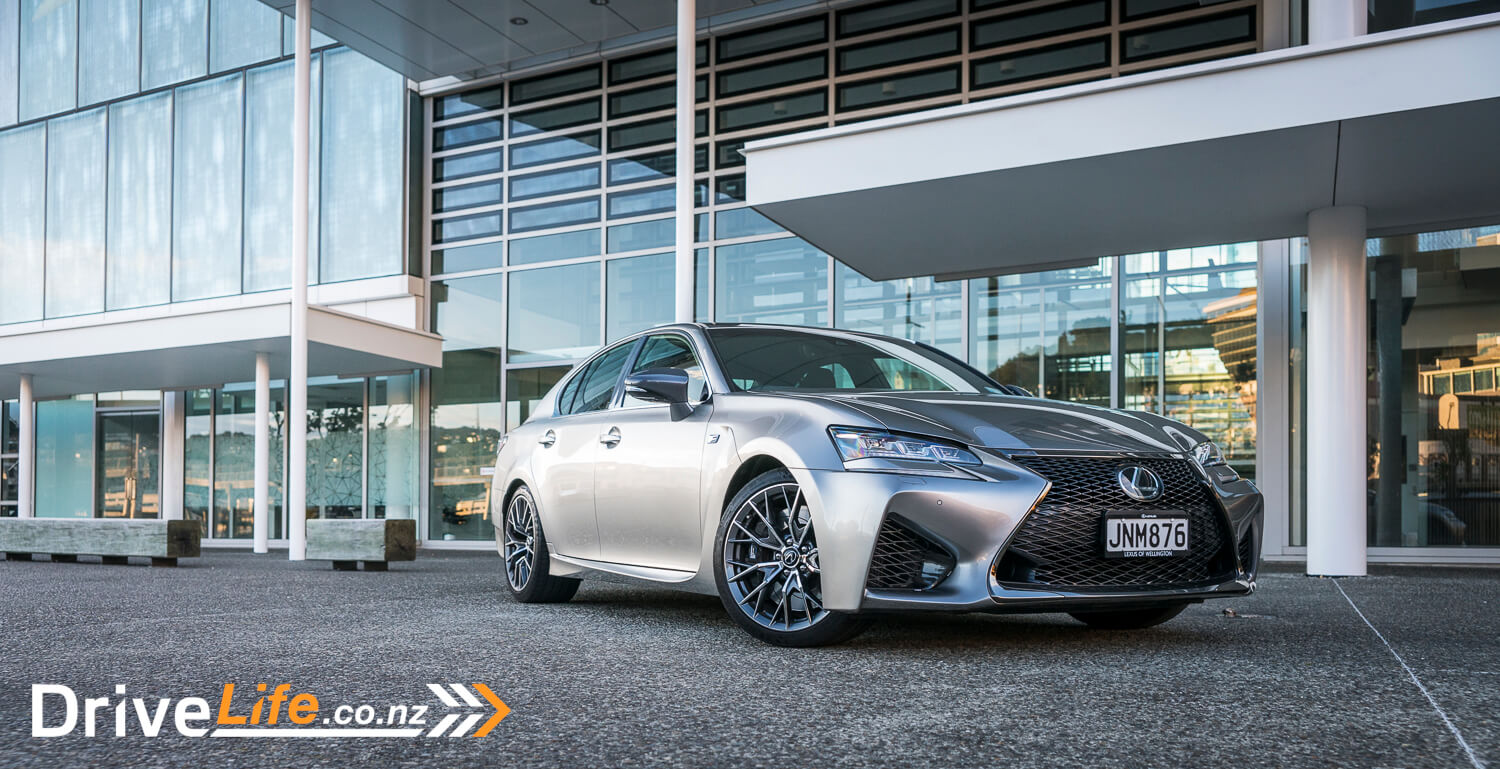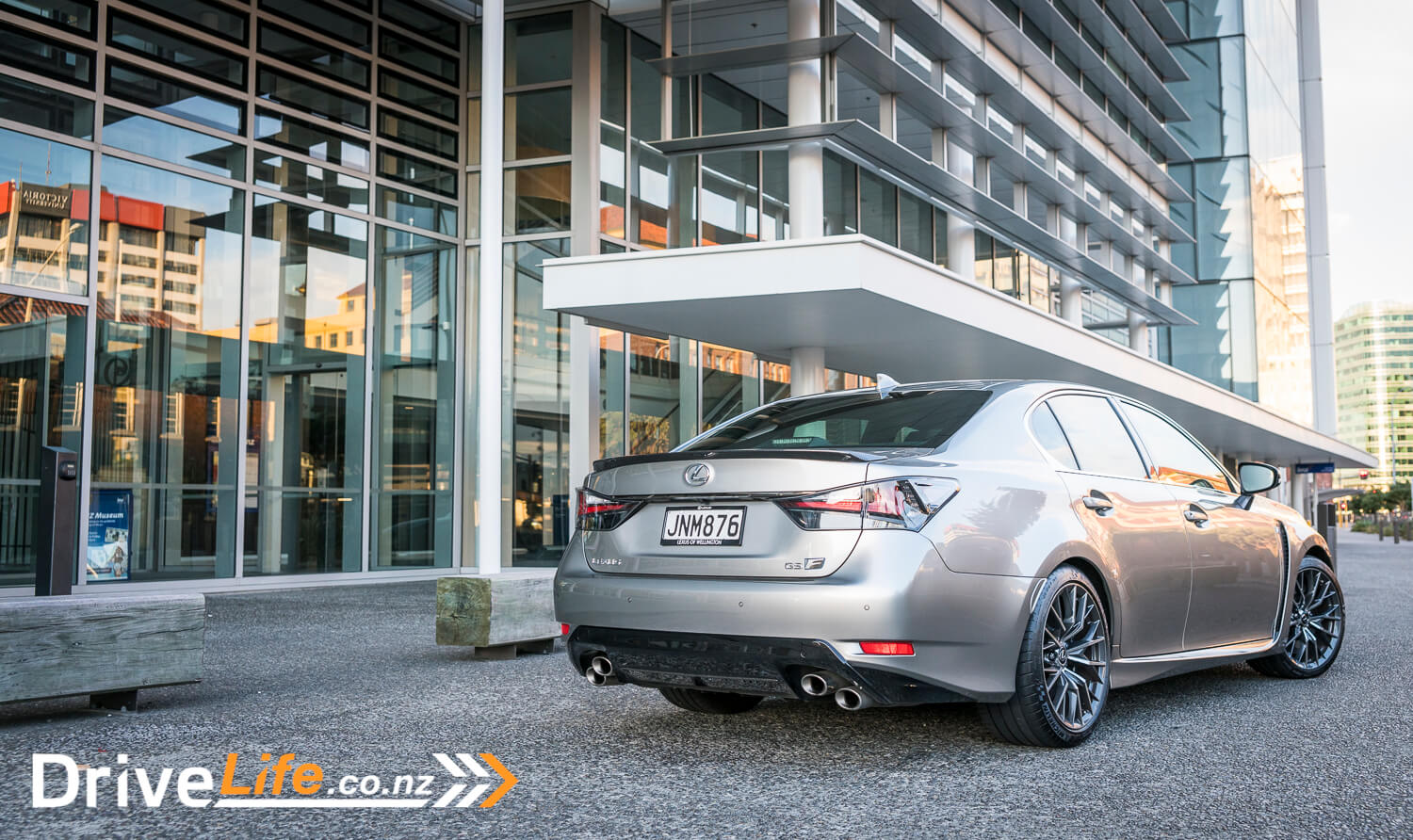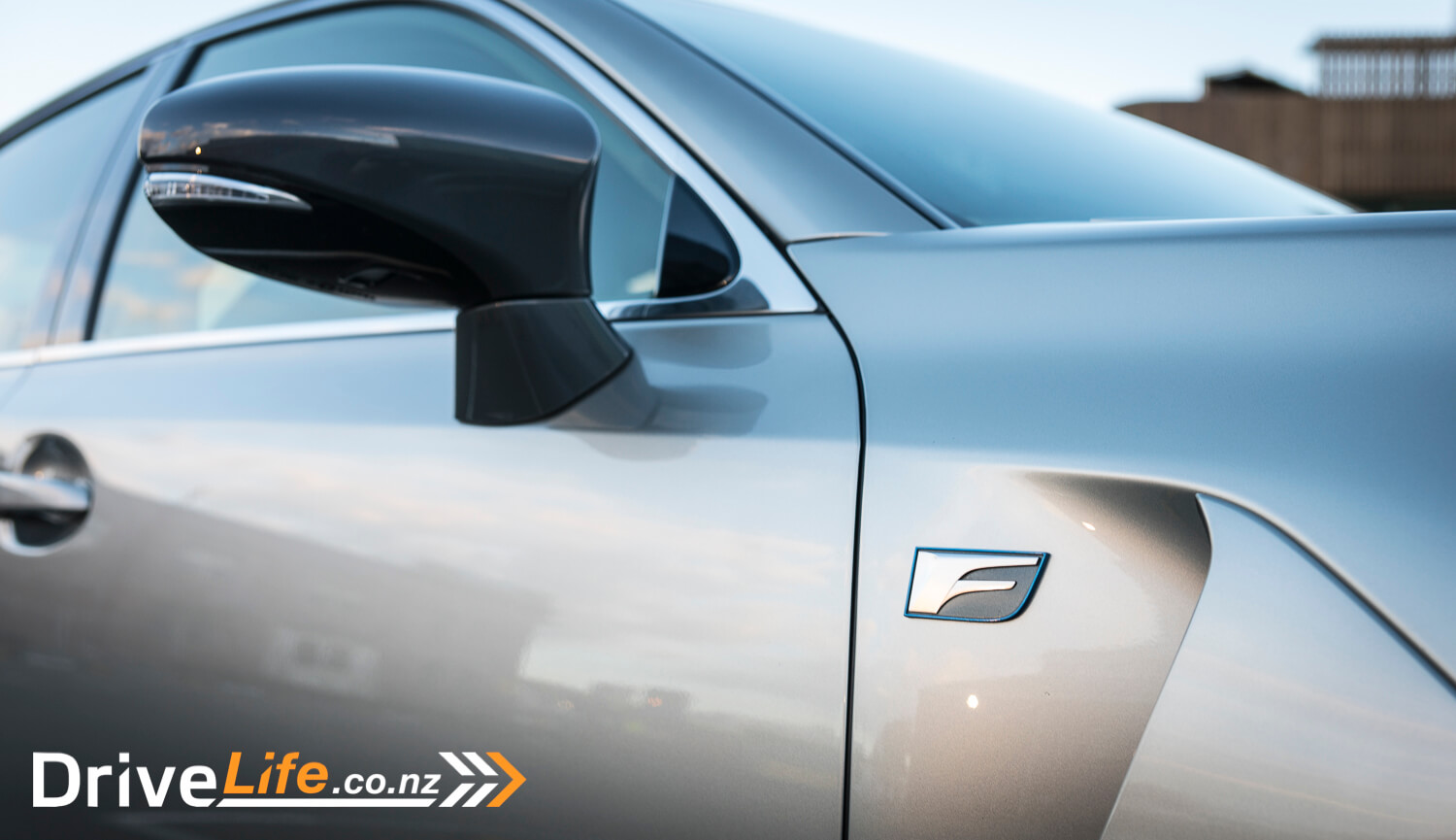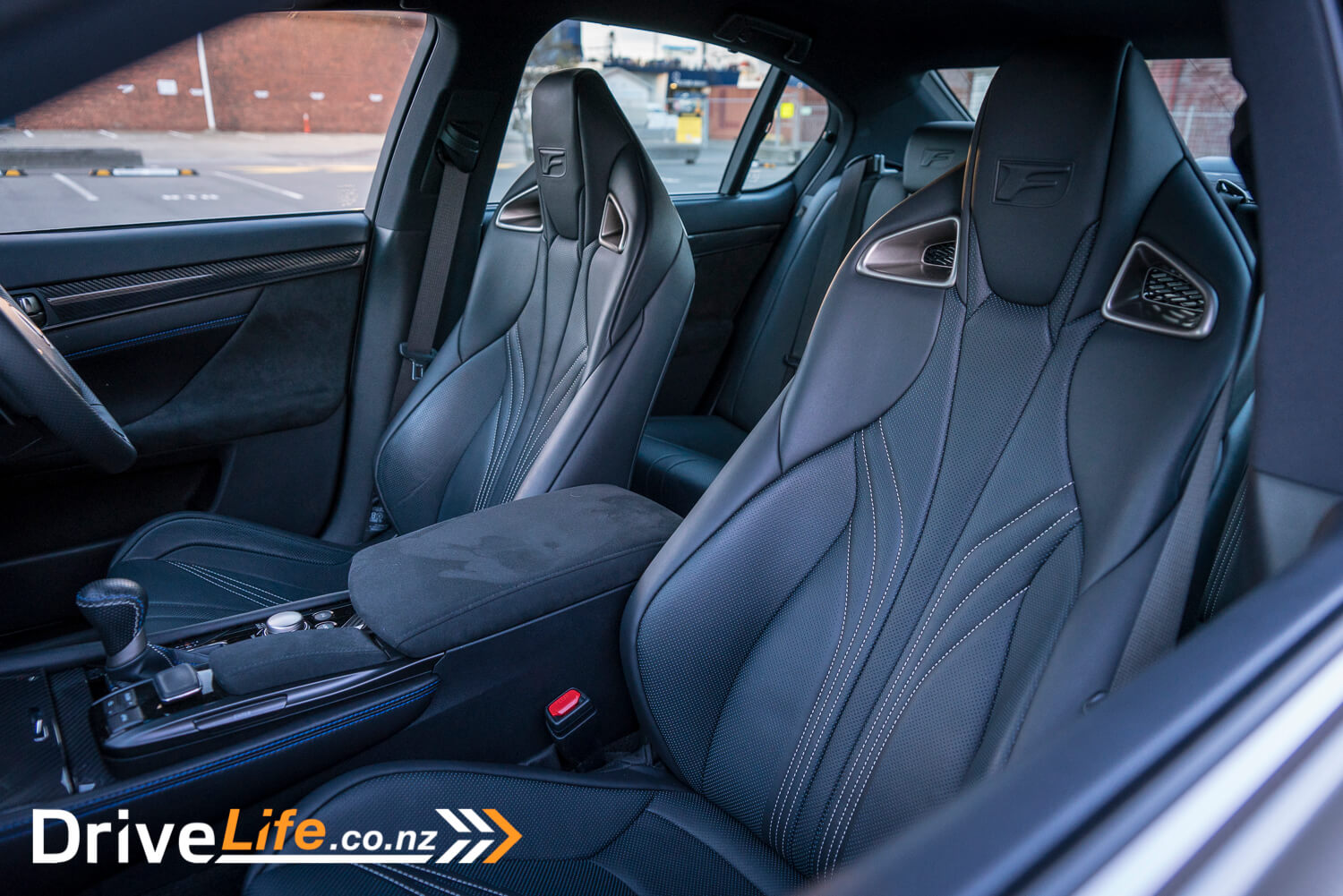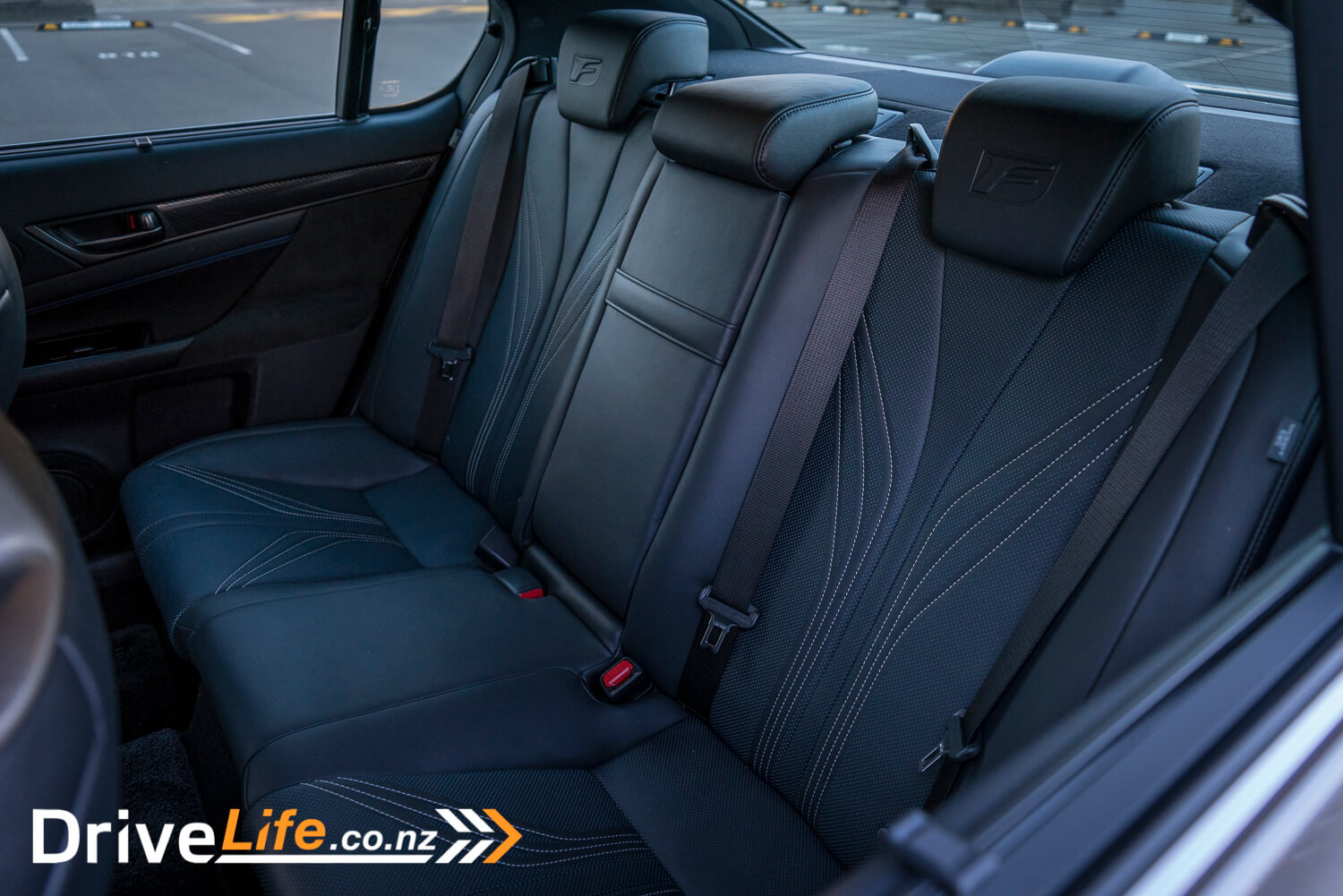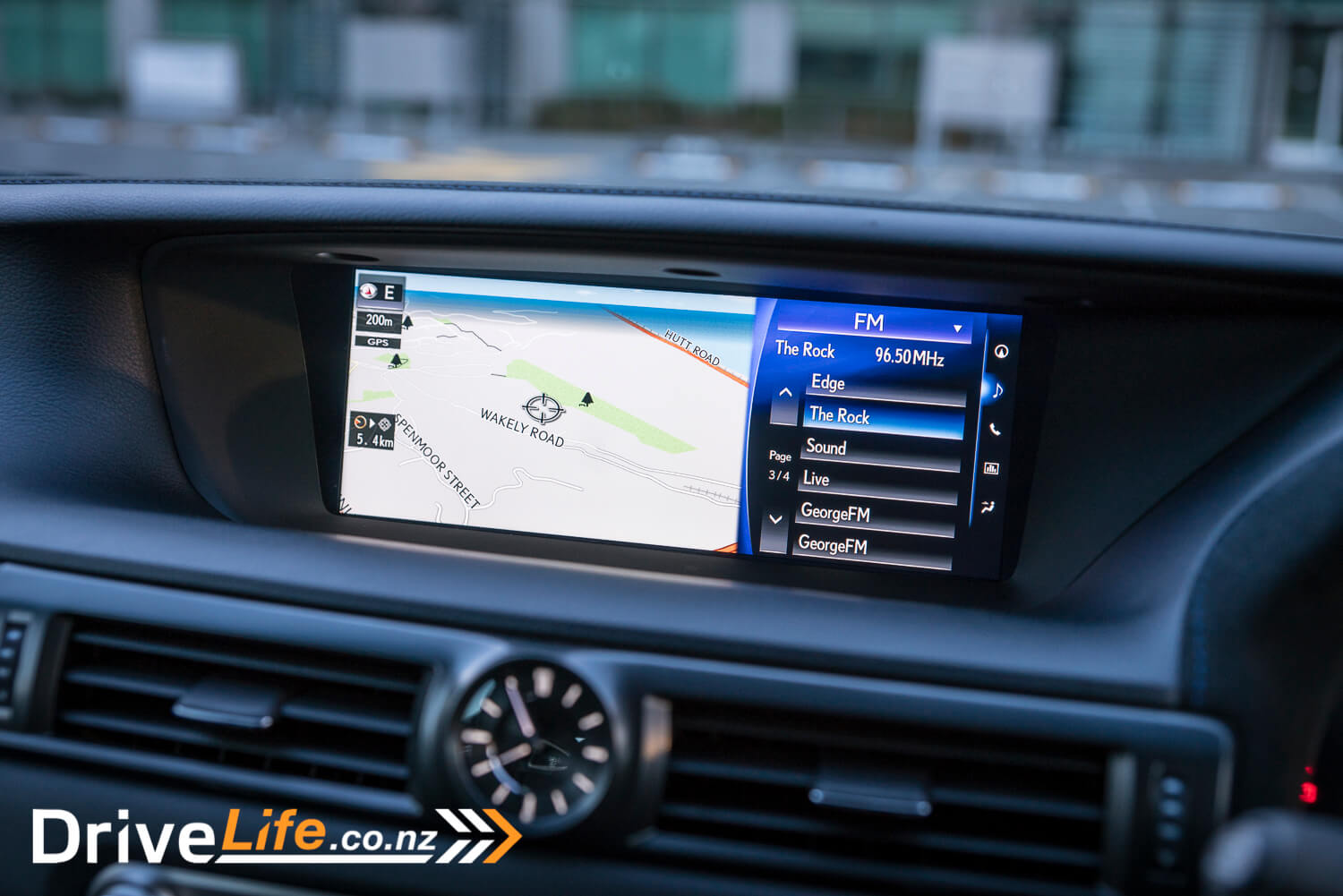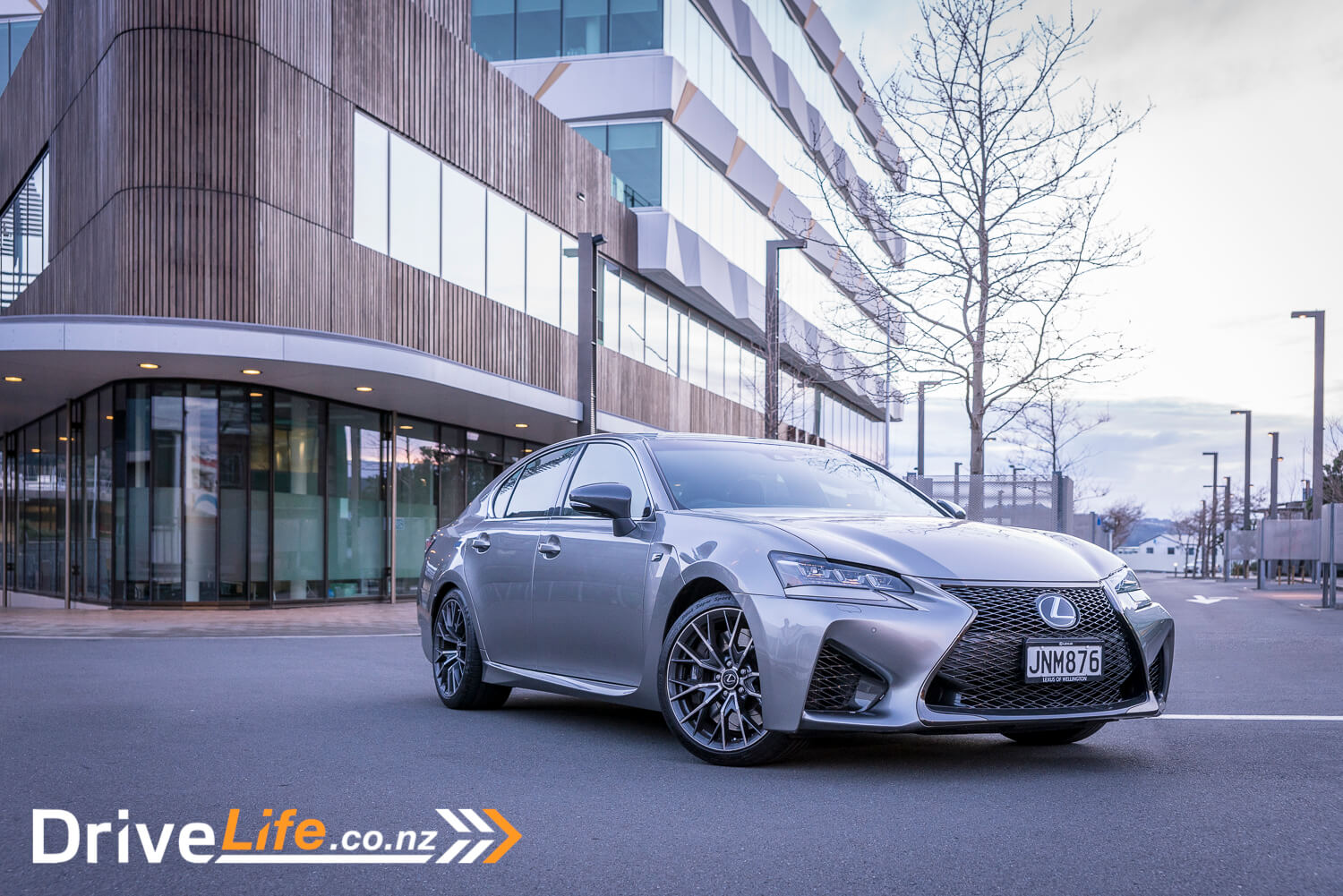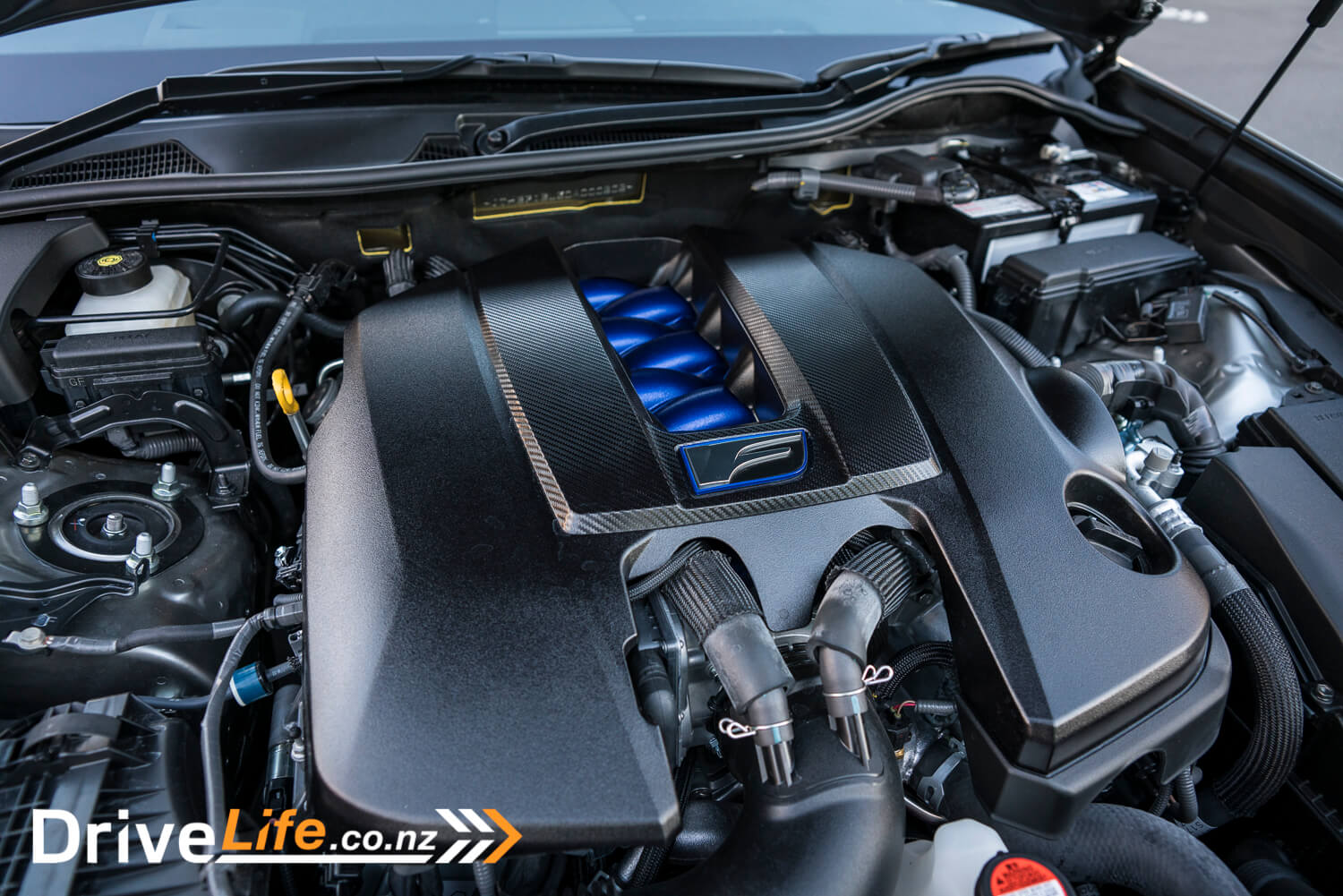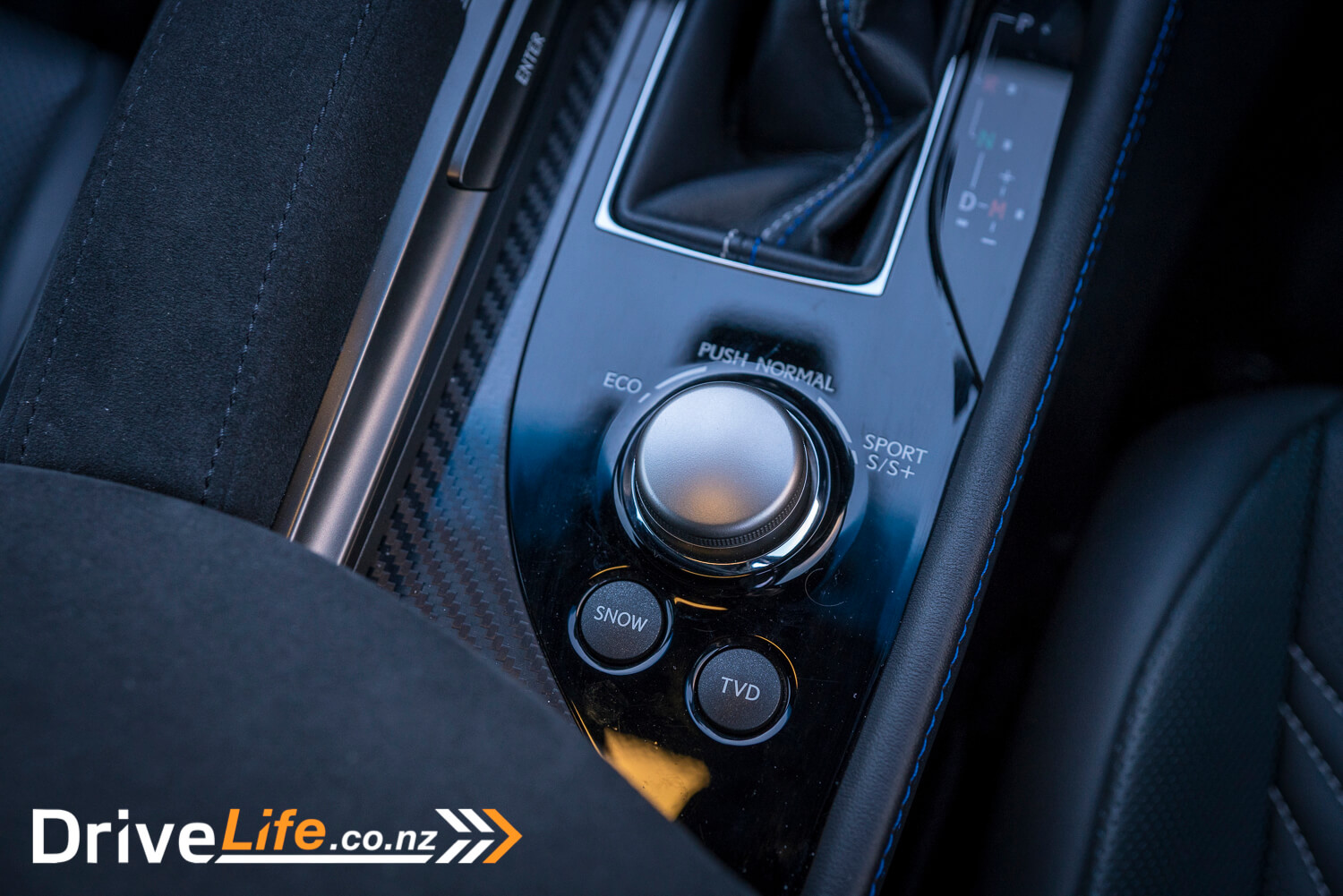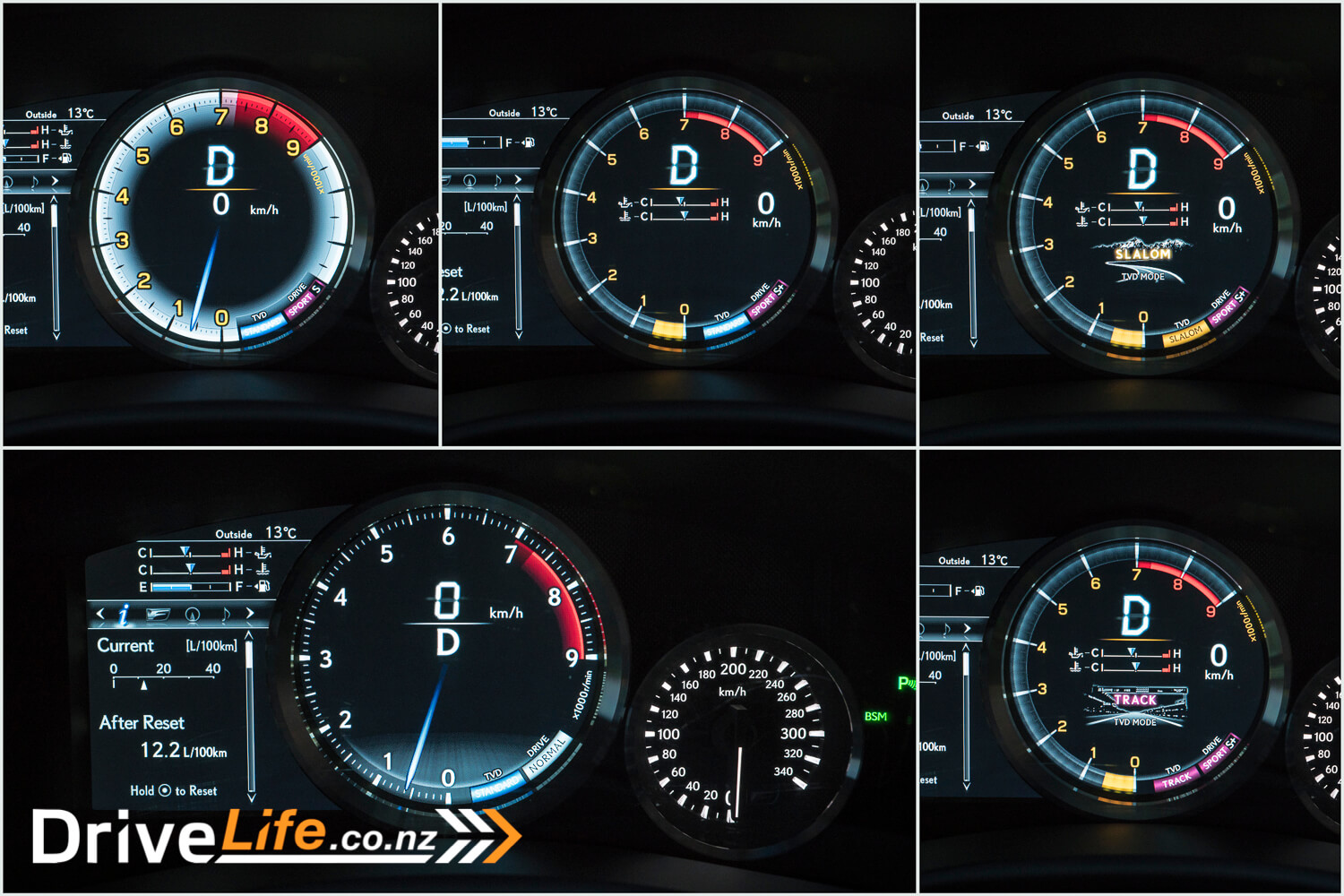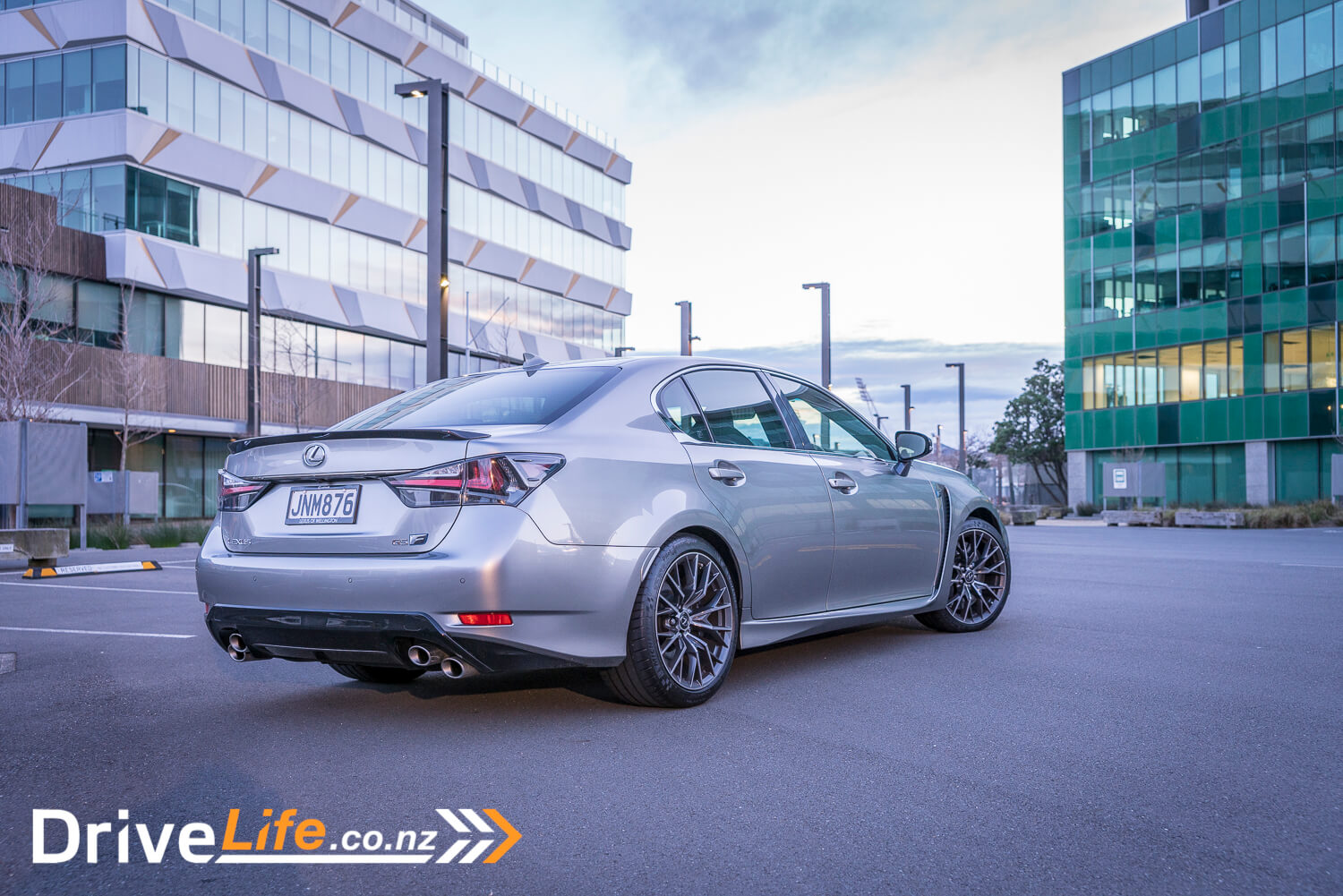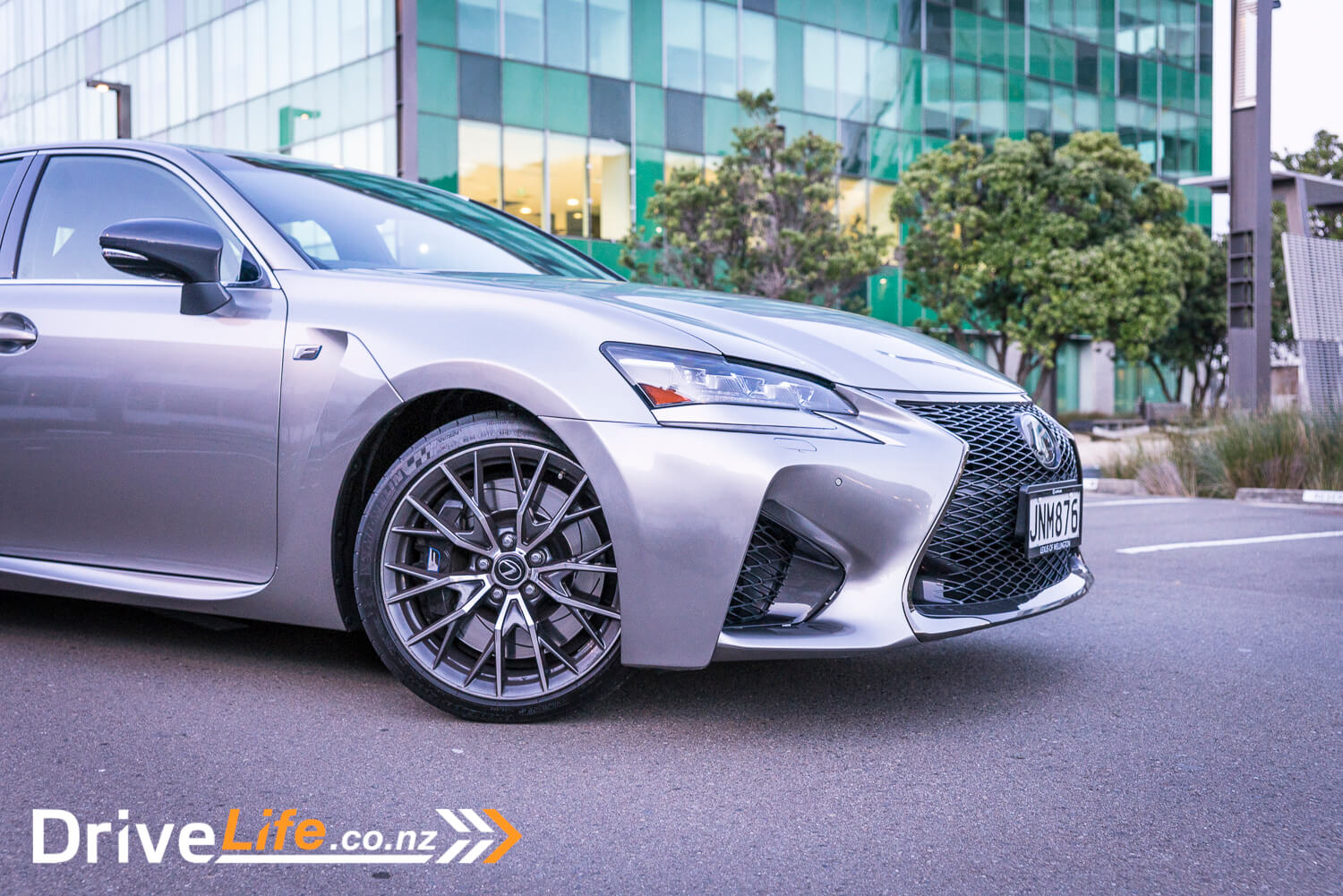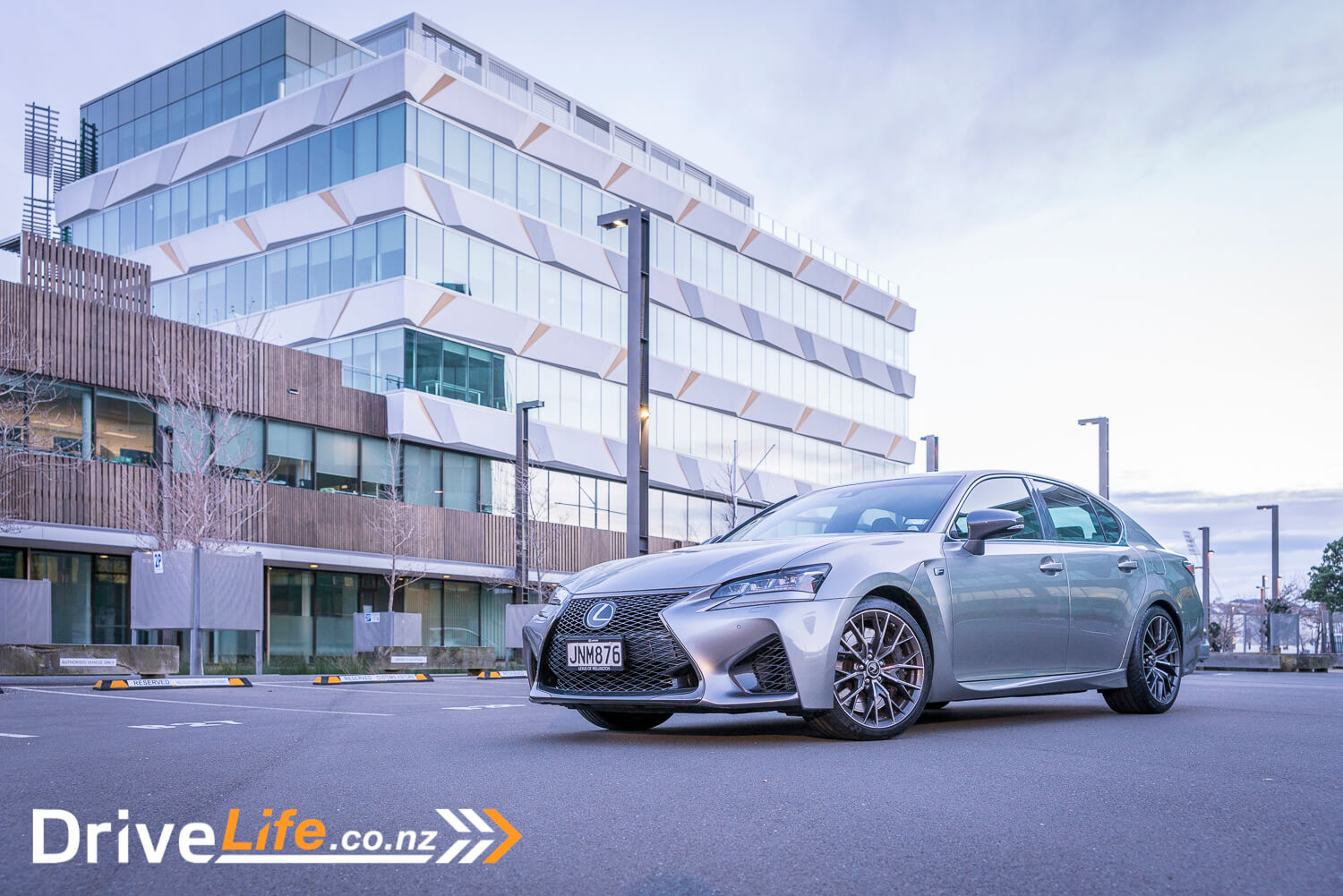The GS range is what Lexus offer as a mid-size luxury sedan. It’s up against the 5 series from BMW, the A6 from Audi and the E class from Mercedes-Benz. Anyone that has been interested in the last 3 models that Germans have to offer, the GS is not something that ever floated around as an alternative choice. But times are changing, and since the launch of the LFA in 2012, we have seen a few outside the box, and very exciting cars from the Japanese brand. This is the first time Lexus has put the F badge on a GS sedan, and when they put it on the RC coupe, the entire world paused, as if to say, “I see what you did there, and I like it”. The Lexus GS F could very easily be described as the more sophisticated, less garish and more practical, older sibling to the RC F. If the coupe was a shirt and blazer wearing playboy, the GS F would be the 3 piece suit fine-dining connoisseur. Both have a thirsty appetite for life, one for those who like the 15 minutes of fame and the other for the background stealth sleepers.
First Impressions
Let’s try for a second to look at this from a different point of view, from the eyes of someone who has not driven and or fallen in love with the Lexus RC F. These two cars are related, and from the same F family of Lexus, but they are miles apart. The GS F that we got to review came in what Lexus called Titanium, but I am pretty sure the rest of the world call it something more bronzey gold or beige. What the colour actually is is not important, but what this colour signifies is. Taking a quick look at its target market; middle age, executive businessmen – this is probably going to be the most common colour. First off, it’s boring and dull. And it successfully makes what can be an exciting car very bland, and might as well be beige. My point here is that I am only excited about this car, because of the known link to the RC F, its engine and that it should in some sense be similar. But for those who know nothing about the RC F, and have never driven it, all they have for a first impression is what sits in front of me, and it’s quintessentially Lexus…… if you know what I mean.
Thankfully this colour and maybe Graphite Black are the two colors in my opinion that make it a little dull as ditch water. But you can get it in Cobalt Blue (my favourite), Lava and Burgundy, which would make it far more exciting upon first glance. There were two things that jumped out at me, with that cheap cut-corners feeling. First one was the stuck on carbon boot spoiler. Come on Lexus, you know better than that. For a $180k vehicle, you want something more than how you stick trim pieces on to regular Toyotas. You did it with the RC F, why drop the ball now? And the second thing was the grey mirrors and B pillar trim covers. Which for some god awful reason are the same colour not matter what car you get. Why on a car of this caliber, would they not be body coloured, like the RC F?
Inside
Once inside the GS F, you find it very similar to the IS, in terms of layout and functionality. Same steering wheel as most Lexus models; comfy enough, nothing special. The interior feels very modern, nice materials, good quality, and all subtly highlighted with carbon fibre inlays on the doors and dash. Even the analogue clock seems more modern, even though this is something I feel Lexus could do without altogether.
Like most Lexus vehicles, the driver’s position feels very natural, and you have everything you need within ease of reach. There are a lot of information displays, from the dials behind the wheels to the Heads Up Display above it. The dials themselves are similar to the LFA, with one big LCD display, and a smaller one to the left which allows you to run through the many different information settings. This ranges from litres per 100km, lap timers, G-Force meter to the real time display of the Torque Vectoring Diff. As standard, the GS F comes very well equipped for comfort and safety. From the comfort side of things, you have 3-zone climate control, Mark Levinson Premium Audio system, seat heating and cooling, and a power boot. For safety, you have Blind Spot monitors, Dynamic Radar Cruise Control, Parking Assist, Tyre Pressure Alerts, Pre-Crash System, and if ever anything did go wrong, 10 SRS airbags.
I was quite surprised, when of all things, I was not that happy with the level of comfort in this Lexus. And you did read that right, Lexus usually hold comfort above all other things, and up until the GS F I had never driven an uncomfy Lexus. When I say uncomfy, I am not exactly sure where to point fault. I found that driving more than 30 mins anywhere, that I would become uncomfortable, and have to move and squirm around the seat to find the right spot. I had spent a good deal of time adjusting the seat positions, but no matter what I did I could not figure it out. After a few days, I thought, maybe it’s just me and my body size, as I am tall while carrying a bit of bulk. However this thought was quashed when most of the other passengers said the same thing about the other seats too. People of all shapes and sizes, and no one could quite work out why. The seat design in the GS F and RC F are the same, however the RC F has alcantara where you sit and on your lower back, while the GS F has leather throughout the entire seat. My only conclusion was that the seat became too firm when completely leather as apposed to the alcantara fabric in the RC F.
The GS F has the same infotainment unit as the RX and LX models who were first to see the very nice new widescreen multimedia display in the dash. This display is controlled by the mouse-like controller beside the gear stick. It works very well, easy to use even when focused on driving as it has force feedback sensation when you move over buttons, and you very quickly become used to its layout. I am not sure why Lexus moved away from the touch track pad in the RC, personally I liked that better, but both systems are easy enough to use.
The Drive
As I mentioned before, this is where I fell in love with the RC F. So much that I had to refill the amazing coupe 3 times in the week and a half I had it. It was such a joy to drive, I just drove it every chance I got. The GS F, as I have already stated, is a different beast, born from the same dream, but forged for very different purposes. Upon starting the GS F, the engine growls into life, and you know there is a lot of power waiting to be unleashed under the bonnet. Nobody, and I mean nobody who got in the car when we had it, did not grin when they heard it fire up. And this is just the beginning of what Lexus offer in a far more exciting and enjoyable way than the Germans. The main reason for this is that during the LFA development, Lexus focused on the driver. And one fundamental part of driving, is sound. For the LFA, Lexus designed engine mounts and A pillars that were specially focused on transferring the sound from the engine to the cabin. Do not confuse this with the likes of a diesel ute, where the engine sound is in the cabin, I am talking about the roar and grumble sounds of the engine, just like having the sound from the exhaust directly in the cabin.
I have been lucky enough to experience the sound of an LFA, and it’s mind blowing, and Lexus has not disappointed me in the GS F either. The engine noise they have been able to funnel into the cabin will leave you with goosebumps. To put this in perspective, my own Audi RS6 that has a Twin Turbo V10 engine, sounds great from the outside. Lovely gurgle and then when you plant it you get that great V10 sound. But inside, not so much. You get sound, and you do get good sound, but a lot of it is just what has been able to force though the sound proofing. It’s not focused or directed at the driver like the GS F. So when you combine the great sound of the GS F’s engine, and the reduced air noise due to the great aerodynamics, all you’re left with is the really good stuff.
During slow city driving I felt the suspension was too firm. Unlike many other cars at this level, the GS F does not have adjustable suspension modes. This leaves the car feeling firm when slow, while tight and very sharp at high speed. The GS F has 4 driver modes: Eco, Normal, Sport and Sport +. Eco – like many cars – just dials back the throttle response, in the only limp wristed way you can make a 5.0L V8 eco. But that’s enough about the Eco mode, if you need to know more about it, let’s just say this car is not for you.
Normal mode, which you end up using the most, is great. Good feel from the throttle, and really nice sound from the engine, when you’re just pottering around the city or out on the motorway. Touching back to the aerodynamics, there is so little air noise from the car, you get all of that 5.0L 351kW (530Nm) V8, like you were sitting on it in the cabin. And here is where Lexus has the Euros beat; it sounds great for the driver in Normal mode, when you’re not even pushing the car to do much. The only one who comes close is Mercedes-Benz AMG’s.
Sport and Sport + modes: before we go too far into these modes, I need to explain the TVD. The Torque Vectoring Differential is not your average diff. This diff, instead of having your normal coupling from the drive shaft, it has two electric motors. These motors (which are from a Prius) are able to independently control the rear wheels. When it gets there, the torque vectoring differential divides the torque between the two, providing stability on the rear axle in situations where the driver might lose it. And I use the term lose it instead of need it, as this system is not so much a driver safety system, but a driver improvement system.
Now back to the Sport and Sport + mode; once engaged, let’s say for a spirited jaunt through the country. Paired with the TVD in Slalom mode, you are going to quickly feel like you can do anything in this car. If you want to power out of a corner early, something not normally done without loss of traction on a rear wheel drive, the TVD will make sure that the 351 kw are split up, giving the outside wheel more power pushing the car around the corner and then evening up for the straight.
Just like the RC F, I took this car up and over the Rimutaka road to the Wairarapa. This is where you can really feel the TVD working, helping you as you carve up the roads ahead. And for a car like this, the TVD system and that engine are a perfect match.
What it’s up against
When you throw the Lexus into the Euro fighting pit, it sinks to the bottom real fast. It’s not the fastest, most powerful, or most expensive. Can its price and brutish engine sway your consideration to include what Lexus has to offer?
| Brand / Model | Engine | Power | 0-100 km Time | Fuel L/100km | Boot Capacity | Price Highest to Lowest |
| Jagaur XJR | 5.0L Supercharged V8 | 405kw / 680Nm | 4.6 Seconds | 11.1L / 100km | 520 Litres | $220,000 |
| Mercedes-Benz E 63 AMG-S | 5.4L Twin Turbo V8 | 430kw / 800Nm | 3.4 Seconds | 10L / 100km | 540 Litres | $215,000 |
| BMW M5 | 4.4L Twin Turbo V8 | 412kw / 680Nm | 4.3 Seconds | 9.9L / 100km | 520 Litres | $210,800 |
| Audi RS6 Avant | 4.0L Twin Turbo V8 | 412kw / 700Nm | 3.9 Seconds | 9.6L / 100km | 656 Litres | $198,000 |
| Lexus GS F | 5.0L NA V8 | 351kw / 530Nm | 4.6 Seconds | 11.3L / 100km | 480 Litres | $174,900 |
| Pros | Cons |
|
|
What do we think?
I like the GS F, but then I would. It’s my kinda car. Practical, packed with toys, powerful and sounds great, for all intensive purposes this should be a home run for Lexus. But it’s not. It has what some of the others do not, but it also lacks what they offer as a complete package. The ball has been dropped in a few places from the RC F, and at that with the comfort issue, and the Germans still have it beaten by a nose.
But it’s definitely worthy of your consideration when you’re looking for luxury and performance.
Rating – Chevron rating 3.5 out of 5
Lexus GS F
| Vehicle Type | RWD Luxury Sedan |
| Starting Price | $174,900 NZD |
| Tested Price | $174,900 NZD |
| Engine | 5.0L Naturally Aspirated V8 |
| Transmission | 8 Speed SPDS (Sport Direct Shift) |
| 0 – 100 kph | 4.6 seconds |
| Kerb Weight | 2320 kg |
| Length x Width x Height | 4915 x 1845 x 1440 mm |
| Cargo Capacity | 480 Litres |
| Fuel Tank (range extender) | 66 litres |
| Fuel Efficiency | Combined – 11.1 L / 100km |
| ANCAP Safety Ratings | N/A |


